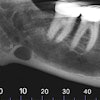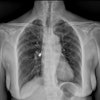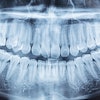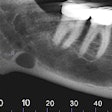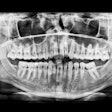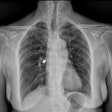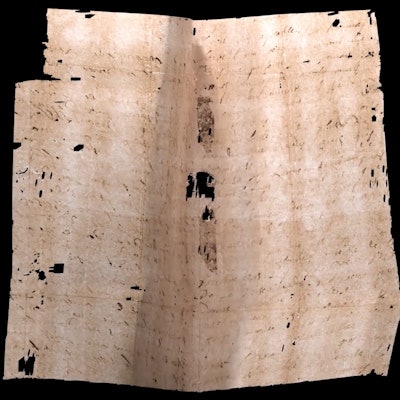
Researchers used a dental x-ray scanner to virtually unfold and read a sealed letter from the Renaissance in Europe, according to a study published on March 2 in Nature Communications. This is believed to be the first time the technique has been used.
Researchers at Queen Mary University of London's dental research labs developed a microtomography scanner, which operates similarly to computed tomography (CT), to scan a batch of unopened letters from a 17th-century postal trunk. The trunk was filled with undelivered mail that had been held at the Brienne Collection, Sound and Vision The Hague, in the Netherlands.
 Computer rendering of an x-ray microtomography scan of a letterpacket. All images courtesy of the Unlocking History Research Group archive.
Computer rendering of an x-ray microtomography scan of a letterpacket. All images courtesy of the Unlocking History Research Group archive."We designed our x-ray scanner to have unprecedented sensitivity for mapping the mineral content of teeth, which is invaluable in dental research," stated Graham Davis, PhD, a professor from Queen Mary University of London, in a university press release. "But this high sensitivity has also made it possible to resolve certain types of ink in paper and parchment."
The microtomography scanner can visualize minute traces of metal in the ink used to write the letters. That allowed the researchers to turn the scanned images into letters that could be opened and read for the first time in more than 300 years.
The letters had been sealed using letterlocking, a common historical way of turning a sheet of paper into its own envelope, according to the authors. Until now, people had to cut open historical letters to read them. This often resulted in damage to the letter's contents.
"It's incredible to think that a scanner designed to look at teeth has taken us this far," Davis added.
 A letterpacket written in 1697. The letter contains a message for Pierre Le Pers, a French merchant. A watermark containing an image of a bird is visible in the center of the paper.
A letterpacket written in 1697. The letter contains a message for Pierre Le Pers, a French merchant. A watermark containing an image of a bird is visible in the center of the paper.After the investigators used x-ray microtomography to scan the letters, they applied computational algorithms to identify and separate the different layers of the folded letter and virtually "unfold" it. The new method revealed the contents of a letter dated July 31, 1697. In the letter, Jacques Sennacques asked his cousin Pierre Le Pers, a French merchant in The Hague, for a certified copy of a death notice for Daniel Le Pers.
The virtual unfolding method may help researchers understand this historical version of physical cryptography and also conserve cultural heritage. However, the approach has not been applied to documents highly warped or damaged from excessive heating, delamination, decay, or water. Warped artifacts may fail to map properly into 2D using the current method, Davis and colleagues noted.
"Letterlocking has enormous potential to cast new light on countless primary historical materials, and our generalized algorithmic conservation approach demonstrates the power of computational analysis for driving this research forward," they wrote.

